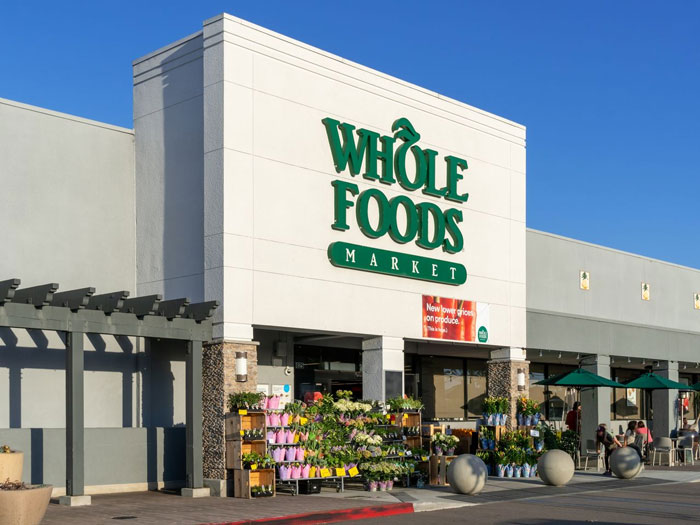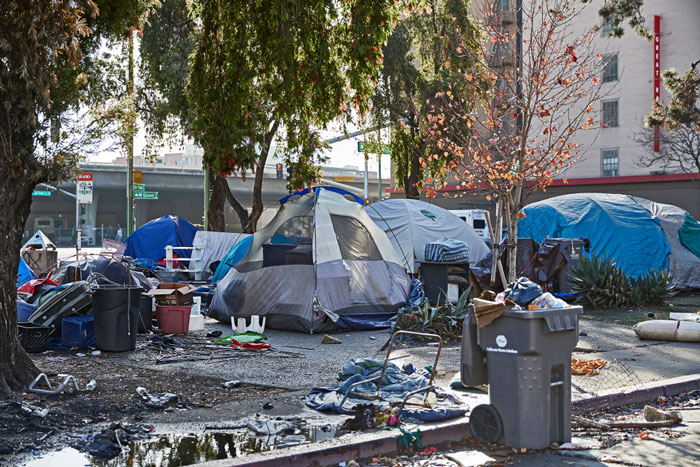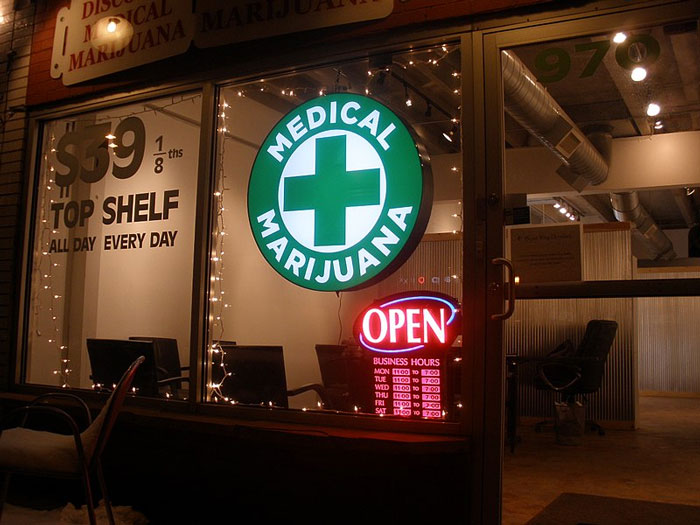One man’s trash is another man’s treasure, and one man’s progress can be another man’s downfall. Gentrification can benefit some people, but for others, it can be a life-changing calamity that forces them to uproot from neighborhoods they may have lived in for generations. Some people on Reddit have shared signs of what to look for when neighborhoods start gentrifying, and some of them have even highlighted why some of these changes can be so problematic.
Have you seen any of these signs in your neighborhood? Also – perhaps more importantly – would you consider yourself a beneficiary or a victim of these changes?
#1
The FIRST sign is the first quirky coffee shop that isn’t a Starbucks. See one of those, and grab you some real estate, because the bougies are coming, and they’re bringing stupid housing prices with them.

Image source: HawaiianShirtDad, Tyler Nix
#2
once the Whole Foods comes up, it’s already too late

Image source: turbulentjuic
#3
They remove the homeless camps and check cashing stores leave

Image source: Effective-Pilot-5501
#4
I think by the time you start seeing it, it’s already happened. Displacement and rent increases are mostly invisible (comparatively). By the time the new condos and bougie shops sprout up, it’s because it’s already past the tipping point.

Image source: novium258, Roman Bozhko
#5
Gentrification isn’t random. It’s an ongoing process. I live in Charleston, South Carolina. We’ve experienced significant growth in my lifetime. We’ve gotten to the point where building new neighborhoods further out is an increasingly less viable option. Add to this, large employers moving into North Charleston, and you have a recipe for gentrification. This isn’t because someone bought an old gas station and turned it into an art gallery. It’s because people need a place to live, and industry is growing in our city. Those art galleries and taco shops are responding to the same economic conditions that the developers are. They see an economically depressed area in commuter distance to major employers.
Image source: ghostwriter85
#6
People running or jogging, especially during the weekday mornings.

Image source: Irunmtns, Jozsef Hocza
#7
I tell this story all the time. years ago, I was driving down Telegraph near the Fox Theater with my wife at about 2am. While at a stoplight, we saw a white woman jog out of one of the very dark streets onto Telegraph with headphones on, workout gear, etc. We looked at each other and without a word realized what the other was thinking. We bought a house the next month.

Image source: beatyatoit, Zac Ong
#8
White people. I have Pacific Islander friend he was jumping for joy the other day because he saw white people jogging in his neighborhood. His house is about to double in value.

Image source: anon, Laurent Bourscheidt
#9
Check cashing stores get replaced by dispensaries

Image source: GradatimRecovery, Wikipedia
#10
If you follow your local newspapers and you start reading about apartments being sold and the new owners wanting to renovate is a sign. This type of action by the new owner will usually come with mass eviction notices. Especially, if they are rent controlled and support certain demographics like senior citizens or those who are lower income. Then when the reno is complete, new owner jacks the rent up ensuring old tenants can’t ever come back. Sending displaced tenant away like a ripple effect to the next cheapest block or city. Then the neighboring apartment buildings say, well the apartments next door are charging the new amount, so should I, then the next wave starts, w/out the renovations. The cycle continues. Demand in the new area for newly displaced or gentrified population will then be focused on by the last corporate apartments buyers to do it all again, until we all live in a van down by the river.

Image source: labormarketguide, Thirdman
#11
Rent going up 300% over the course of a decade.

Image source: Canada_Haunts_Me
#12
Mass buying of local properties by real estate investors, while pricing out local buyers.
Image source: Hel-or-Highwater
#13
The ‘artisan’ restaurants that make a classic food (burger, taco, etc.) and make them 25 dollars because of their premium ‘aiolis’ or other fancy ingredients. They’re usually decorated with a graphic of the parts of a cow or pig.

Image source: andrew2018022, Engin Akyurt
#14
Dispensaries, graffiti replaced with murals, coffee shops and breweries, bike lanes that take up a whole lane as well as other questionable planning, and tons of condos that look like legos

Image source: matsumotoe, Toa Heftiba Şinca
#15
micro breweries and communal marketplaces, martinez just got one downtown, gonna be unaffordable soon

Image source: koopasmasher, Louis Hansel
#16
Old buildings/apt complexes start randomly ‘catching on fire’
More joggers in the area
Gay couples moving in
More houses getting renovated
City projects to ‘improve’ the streets or public transportation
Image source: arruv89
#17
I saw a dude out walking his cat. I know that was the beginning of the end.

Image source: the_clipping_bureau, Sergey
#18
At some point, an organic grocery store opens up. The crime rate goes down over time. Home prices/rents go up quickly. More coffee shops and breweries.

Image source: iapetus3141, Fikri Rasyid
#19
vegan restaurants and places that sell scotch and grilled cheese with over priced coffee Brewery and crossfit gym

Image source: anon, Farhad Ibrahimzade
#20
An influx of Mercedes and Teslas.

Image source: whoocanitbenow, Maxim
#21
A lot of this is spearheaded by property developers/home flippers looking at analytics to find the next neighborhood to invest in.

Image source: ghostwriter85, Michael Tuszynski
#22
You know a place is being gentrified when a lot more artists move in. Artists first go somewhere for cheap prices and then make it ‘interesting’ to richer people. We then — usually accidentally — attract monied people who want to either be associated with us or exploit us, and then, the dive bars flourish. Then, you start seeing artisanal coffee spots. From there, you give it five years.
#23
If an area is headed for gentrification, people who don’t have children start moving in. Artists, musicians, writers. College students. Restaurants, especially trendy restaurants. Galleries and music venues. Bookstores. Coffee houses. All the kinds of places young hipsters like. Housing stock that is neglected but can be restored. Young people living in a cooperative.

Image source: jupitaur9, Chase Yi
#24
Recovering planner here.
In the background, people look for parcels that are worth more than the improvements. If there are a lot of them in an area – especially an area with amenities and good transport bones, it is a good candidate.
Image source: DanoPinyon
#25
I’ve worked in Civic Center SF since 2003, so I’ve seen its evolution for the past 19 years. This place went from a total wasteland to one of the most busiest locations in the City. The first thing they did right when Twitter moved in? They started razing all the cheap hole in the wall restaurants and parking lots for shiny new apartment buildings.
Basically expect any old ma and pa businesses and parking lots to be the first to go.
Image source: cocktailbun
#26
I experienced this in Atlanta through the full process. I moved into a neighborhood that was mostly elderly residents who have probably lived there 20+ years. The house I bought needed repair, but this was in 2011, so the price was manageable. The first sign of things changing was an increase in racist judgemental posts on Nextdoor that were like, ‘Sketchy AA male acting weird and walking in the street.’ When I moved in, my neighbors were extremely friendly and let us know some of the characters in the area, like ‘Watch out for the guy who tries to get you to drive him to Auto Zone then try to scam you for cash-type stuff. Then a new development went up down the street (my street was half in a nice city zone and half in the incorporated county). This is what really started the process. Another development went up a year or so later.
Image source: BoydCrowders_Smile
#27
Franchises start replacing local businesses.
Image source: Hel-or-Highwater
#28
Look at transit changes – road changes, public transit changes, etc.
Look at plans for new parks that didn’t exist prior.
Look at permits for major developments – house redevelopments, new condos, etc.
San Francisco has a map of permits, both at application level and approved level
Image source: deepredsky
#29
One thing that has stood out is a new trendy name that has come out of nowhere. We live in ‘insert name,’ and it’s been called that forever. Uhhh, no it hasn’t!. Exactly! We actually have a new area deemed SODO. I asked someone once about all of the names, and I almost lost it and laughed in their face. They asked how would you know where to go if you had to meet someone somewhere or go to their house. I held it together, but I’m sure my face gave it away. I don’t even think I responded to that.
Image source: w84primo
#30
Big demographic shifts. Not just the people of the neighborhood, but the local businesses as well.
Image source: Antitenant
 Follow Us
Follow Us




